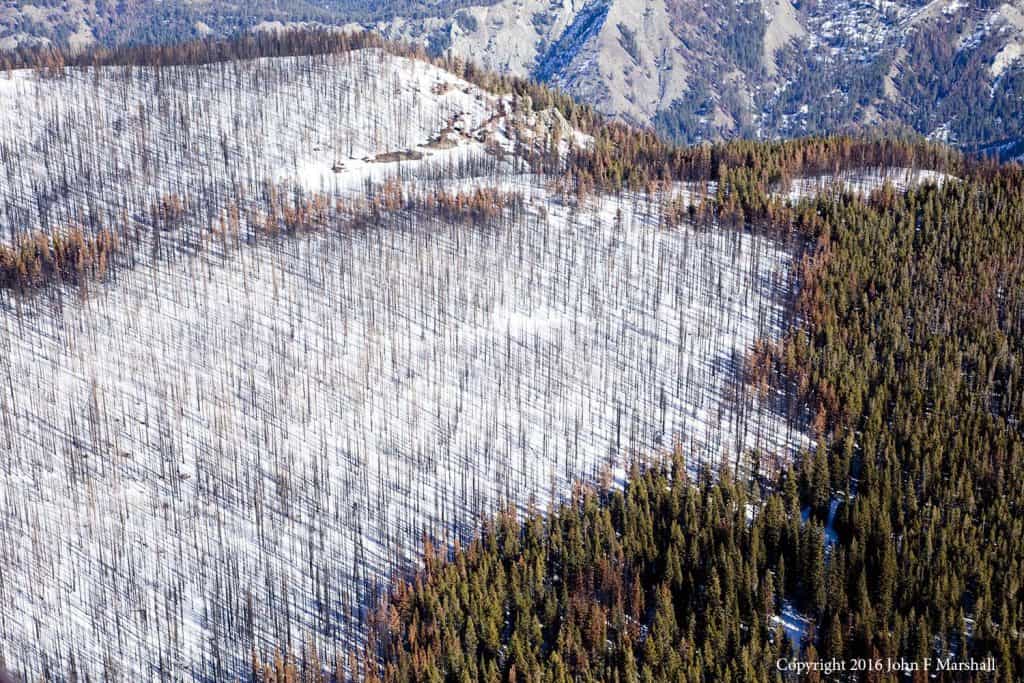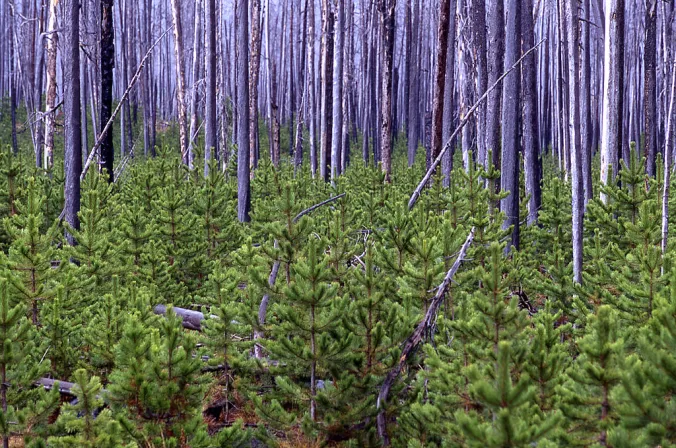After fires in 2020 and 2021, the Forest Service’s California region bit off more than it could chew when it proposed to log “hazard” (sic) trees along 5,800 miles of forest roads. Now the regional office has asked the Chief for an emergency exemption from NEPA review for 167 miles of its roadside logging. Why? “Because “project planning and Endangered Species Act (ESA) consultation is taking longer than anticipated.” The Chief granted the exemption yesterday.
Who could have known that the Forest Service’s largest logging project in its history might take “longer than anticipated?”
PS: The FS claims these fire-affected trees are “hazardous” because “within the last 10 years, the Forest Service has documented 69 claims against the government of property damage, 11 injuries, and four fatalities in the western regions associated with falling trees/limbs.” There’s no evidence that these damage claims are associated with fire-affected or dead trees. Most tree-related injuries result from live, green trees falling. That’s because most trees that fall are live and green when they keel over.
Snags/ dead trees pose hazzards. Hot fires like Dixie can severely damage or destroy tree roots. causing roadside and interior hazzards.
Snags are also a danger to firefighters, who often wont get near a burning snag if it looks like it is ready to implode. I applaud the Forest Service for taking the action to ask for a NEPA Emergency exemption. It is a start at doing something to address the wildfire problem. Unfortunately, more is needed, including landscape thinning followed by control burning where it can be safely employed.
This has been a problem in the ANF, yes. Within the Williams Fire and the previous Curve Fire, we had underground root burns still after 8 months or so after the fire, FLIR offered hints but getting hand crews to dig up roots and water things down is damn near impossible in our steep ground and there’s no real good reason to get everything extinguished within a burn footprint so they’re left to smolder and they just keep an eye on things.
Andy, I think we must be thinking past each other. You said “That’s because most trees that fall are live and green when they keel over..”
As a veteran of many bark beetle areas, trees seem to get the beetle, then die, then fall over. But (almost all) dead trees ultimately fall over as time goes by. Are we not talking about the same thing?
Trees mostly get blown over by wind. And most of the trees that get blown over are green. That’s why most tree-fall fatalities are east of the Mississippi where tornadoes and hurricanes are commonplace. The eastern U.S. also has substantially more tree cover. But, don’t believe me, look it up.
Ironically, if we didn’t cut dead trees next to roads, there would be a MUCH higher percentage. (See how that works?)
Additionally, many trees remain green, while having serious bole scars, mostly from wildfires. Trees don’t have to hit people to endanger them. We ‘saved’ a married couple after a dead tree blocked their exit from a hunting trip. They spent a night in their car, and help was many miles away.
I think there may be two differences in the way we are thinking about this.
1. I am not thinking about fatalities, I am thinking about trees that will ultimately need to be removed from roads. Say 200 visits to cut and remove trees versus one; as long as trucks run on fossil fuels, think of the climate impacts ;).
2. I am not talking about the “majority of trees in North America” I am thinking if you have a hillside of bug or fire killed trees at place x within State y, at some point gravity will have its way, whether in a wind event or not.
Hi Sharon, to Andy’s point… Natural mortality in the forest as high as 30% of trees as dead snags and downed logs have been used as an excuse for more logging since logging first began. What’s irrational about this is that forests have been evolving amongst this level of their own dead for hundreds of millions.
But humans, especially out here in the PNW see this natural system as a “mess” that needs to “be cleaned up” and the very first roads to gain access to this landscape targeted the dead and down trees to improve logger and firefighter safety for future liquidation projects.
So given the extreme lack of healthy mortality in forests stands and whole landscapes of all green young trees with no legacy characteristics and a famine of large woody debris, Andy’s point is entirely valid. And I hope he sees this and shares some references because it’s worth building up more references for.
In my years of studying the science of tree decay, a surprising majority of dead trees die standing and slowly precipitate their bodies in each gust of wind and that’s why natural healthy forest ecosystems have an abundance of still standing dead trees that slowly lose a little off the top till they’re barely taller than a stump.
So I think your disagreeing with his claim shows a lack of learning about tree physiology in the end of life stages and glut of understanding about the human mindset that treats death and debris as something we have to “get rid of” rather than that which ensures healthy soils and ecosystem sustainment long into the future.
Nope, I think it’s not my lack of learning pf tree phiz. I think it’s probably because I am more familiar with stands like this..I think your experience is more West side and mine is more about trees that in fact do fall over over time. And that’s why even the Park Service doesn’t want them falling into roads or campgrounds, regardless of philosophies..
Here are some photos. Aerial Photograph over burned area: Between sections 1 and 12 of T 21 N. R 18 E. North of Upper Naneum Medow in vicinity of origin of Tronsen Ridge. Table Mtn. Complex Fire of 2012. Elevation approximately 7,100 feet. Background is in Devil’s Gulch.[/caption]
Aerial Photograph over burned area: Between sections 1 and 12 of T 21 N. R 18 E. North of Upper Naneum Medow in vicinity of origin of Tronsen Ridge. Table Mtn. Complex Fire of 2012. Elevation approximately 7,100 feet. Background is in Devil’s Gulch.[/caption]
[caption id="attachment_49542" align="aligncenter" width="1024"]
Note “leaning over” trees on the way to falling down.
And Rocky Mountain National Park post-hazard tree reduction around campgrounds.
So I guess I don’t think we have “an extreme lack of healthy mortality”, here, at least.
Us ANF volunteers tend to address potentially hazardous trees only if they are dead. We’re prohibited from dropping outside of our Class B sawyers certification and training yet we can pull snags to ground with griphoist or rigging and buck up hazards.
Most of the hazards we work with are bark beetle infestation and burn footprints yet only along hiking trails where there is a potential for public structures and recreating public to be within their area of influence. Not sure why roadways are being addressed with this waiver,. that seems… rather strange.
But this NEPA waiver —
Would you post some evidence for this emergency exemption pointing to the actual official documentation that requests and grants the exemption, please?
It’s not that I don’t believe who ever posted this, but I don’t believe who ever posted this. 🙂
Thanks.
Here is the exemption. Here is the request for the exemption.
Interesting take on hazard trees; true hazard trees fall under the jurisdiction of safety on a particular Forest. In Wallow, we had hundreds of miles of hazard trees near roadways and trails, burned guardrail posts and sign damage. We tried the exemption route and were denied. Even had a most powerful Senator offering services for a quick approve; still denied.
So, we did it anyway, using the safety exemption for open roads. Closed roads were generally State Highways, closed for guardrail damage. Trees cut 150 feet either side of roadway (1.5 times the length of the tallest tree). To be honest, some areas were over 300’ wide, and were quite noticeable. We did have buy-in from local enviros, but we also had a quality relationships built on trust developed through tge White Mountain Stewardship Project!
Even then, we had many closed areas (538,049 acres burned) to camping and travel, prior to cutting hazard trees. Nevertheless, we had a group of campers go into a closed area, where a tree came down on a tent and crushed an individual! Yes it was fire damaged but green tree; no claim filed on that one…..
Jim.. when I was in R-2 with bark beetles, OGC told us that as long as we had a reasonable plan for what we treated we should be in good stead legally. I remember a field trip for which the Forest had cleared dead trees in a popular dispersed camping area. But folks chose to camp among obviously dead trees for the shade.
Other forests also have the 150′ wide approach. I like them due to being able to see wildlife better and more light on the road during the day to melt ice or dry up puddles (not paved).
Yes, widening clearing limits and improving sight distances certainly improved safety for the traveling public. We had some pushback along paved highways so we brought down the DRF (Faye Krueger at that time) and she liked it! I/we had a good relationship with Todd Shulke of CBD, and he also approved!
We had more pushback internally than externally. All in all, a great and successful operation…
I wonder how much personal relationships with ENGO staffers affect their corporate decisions…
“But folks chose to camp among obviously dead trees for the shade” — I have noticed that posting signs admonishing recreating public to stay away from damaged trees are widely ignored. 🙂
Part of our JHA is to evaluate potential hazards and overnight efforts the JHA specifically includes sleeping far away from the influence of any potential hazard.
The general recreating public seems to have difficulty evaluating risks.
“We tried the exemption route and were denied” — Was that denial possibly due to the lower population density of recreating public in that area, perhaps? Hazards can be judged by probability of injury which likely includes the number of humans which come within the area of influence, maybe the denial was predicated in low human numbers.
No, very popular State highway, to a very popular high elevation lake on the Mogollon Rim is where we started the efforts. The city of Phoenix and Tucson escape the heat on the Rim. Lots of these forest stands were 100% mortality due to the fire.
Also, a very extensive trail system; both motorized and non-motorized. Our BAER was pretty successful in garnering 32 million dollars. Some of those funds were used to contour snags along slopes, above roadways, trails, etc., so there’s that.
The safety aspect is generally accepted; cutting trees a half mile from the road just couldn’t pass the smell test. We managed to log a couple thousand loads of logs through normal NEPA channels, overwhelming existing industries…